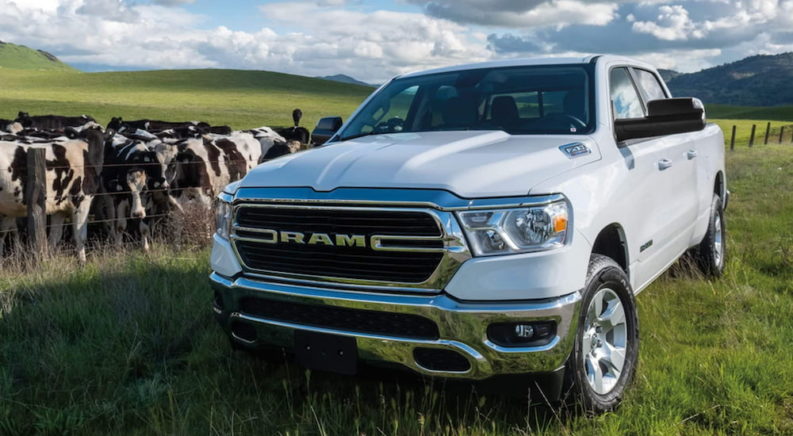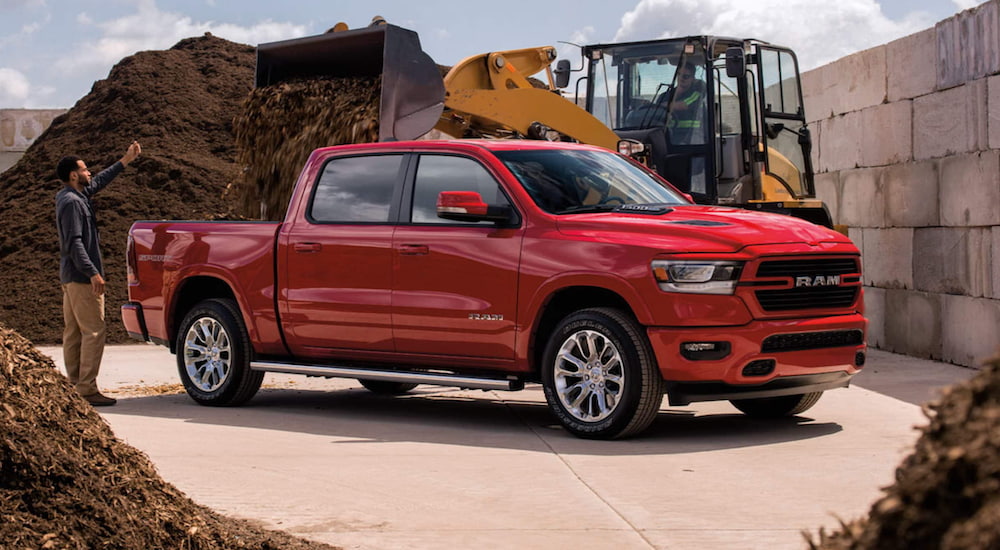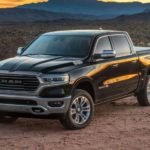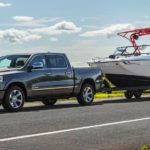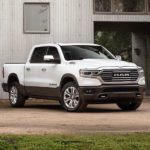Sometimes things just aren’t the way we remember them. Chalk it up to the Mandela Effect, or just simple forgetfulness. Isn’t there such a thing as a Dodge Ram pickup? Can’t you stop by, say, a used Ram dealership and find other Dodge vehicles like a Charger or Grand Caravan? And if you took home one of their trucks, it would still have the words “Dodge Ram” all over it, right?
Actually, a “Dodge Ram” no longer exists because Ram is no longer a Dodge product. You aren’t crazy; the change was easy to miss if you aren’t a pickup enthusiast since the trucks themselves remained largely unchanged.
So what happened? For over a decade now, Ram trucks have been their own independent brand, entirely separate from the Dodge family. In other words, when you’re looking at a Ram truck produced after 2009, you won’t find any traces of the Dodge label on it. What about all those Ram badges and hood ornaments that are out there, spiraled horns and all? This logo is no longer affiliated with Dodge, and Ram appropriately kept it when the two brands parted ways.
However, this doesn’t mean that Dodge and Ram are direct competitors. Quite the opposite, actually. Here’s how the split happened, how it benefits both Dodge and Ram, and what each brand has been up to since they went separate ways.
Background
Go back to the beginning of 2009, when Dodge was still actively releasing their Ram family of trucks. Just as Chevy offers different trucks, all named “Silverado,” and the Ford family includes the F-series of different pickups; Ram was a sub-brand of Dodge, a name exclusively used for their family of pickups.
Then, in April of 2009, Chrysler LCC – Dodge’s parent company – filed for Chapter 11 bankruptcy. But wait, doesn’t Chrysler still exist? They certainly do because bankruptcy wasn’t the end of their story. However, a shakeup was necessary. A new company known as Chrysler Group was formed under new leadership, with Fiat acquiring a 20% stake in the new company. Interestingly, the Fiat CEO, Sergio Marchionne, also became the CEO of Chrysler Group.
The new Chrysler Group decided to shift around their current brands and revise their brand strategies. With some changes, the formerly bankrupt Chrysler family could be profitable once again. Sensing the popularity of Ram pickups within the Dodge lineup, Chrysler made a notable change: they decided to split the Dodge family in half. While Dodge would continue to produce its own vehicles, focusing on muscle cars, SUVs, and minivans, Ram would become a truck-only brand.
Since then, these two brands have remained independent, even though their parent company has undergone some more changes. In 2014, the reorganized Chrysler Group was officially merged with Fiat, forming Fiat Chrysler Automobiles (FCA). The latest major shakeup happened just a few months ago when FCA merged with the French PSA Group (formally known as Peugeot SA). The result of these changes is that both the Dodge and Ram brands are direct subsidiaries of the new multinational entity Stellantis, alongside a dozen other brands.
You may encounter car dealerships that sell several brands under the Stellantis umbrella, including Chrysler, Dodge, Jeep, Ram, and Fiat. And yes, many dealerships do sell both Dodge and Ram vehicles. We imagine it would be difficult for dealerships to turn away clients who still expect to find both Dodge and Ram under the same roof.
Why the Split?
According to Sergio Marchionne, Dodge and Ram weren’t necessarily divided, just “reorganized” into separate brands, with the intention of developing each independently. Like a child growing into adulthood, Ram expanded into its own automobile brand and left Dodge’s supervision.
However, this move didn’t just benefit Ram. The Dodge brand also remained intact, focusing on performance vehicles like the Charger, their famously powerful yet affordable muscle car. Meanwhile, Ram will be an entirely truck brand – at least for the time being. It may be possible for Ram’s tough technology and high tow ratings to be implemented in a series of SUVs in the future. However, there are currently no official plans for this to happen.
What Happened to Dodge?
They’re still alive and kicking. They’re continuing to release new vehicles, including the 2021 Charger and Challenger muscle cars, as well as the 2021 Durango – the world’s most powerful SUV. To avoid confusion, Dodge is no longer releasing a lineup of trucks. Rather, Ram is responsible for the major truck lineup in the Stellantis family.
Chrysler and FCA have done a successful job rebranding Dodge as the fast and fun-to-drive performance lineup. Where Ram focuses on heavy, tough trucks, Dodge’s vehicles are fast, muscled-up, and competitively priced. The Dodge brand image now highlights its aerodynamic, thrilling driving style as something wholly distinct from the Ram brand; in other words, things have only gotten better since Dodge went independent.
What Has Ram Been Up to Since the Split?
Ram has continued to release new editions of the trucks Americans have grown to love, including the Ram 1500, the new off-road Ram TRX, and heavy-duty trucks like the Ram 2500 and 3500. They also produce a series of commercial vehicles in the form of Ram Chassis Cab trucks and Promaster vans. There are no sedans, performance cars, or SUVs in the Ram family; instead, you get capable, ultra-durable vehicles that are designed to carry impossible weight while still performing like smaller vehicles. A lack of overlap with Dodge products is likely one of the major reasons why people continue to assume Ram still belongs to the Dodge brand.
If you shop used trucks produced before 2010, you’ll encounter Dodge Ram products from before the split. Many Ram dealerships still proudly offer these older editions and will continue to service them. However, if customers ask for a Dodge Ram – likely a common occurrence – they’ll probably be questioned about their preferred body style and then pointed to the correct brand in their inventory. This is likely much easier and faster than explaining the brand split every time. Ever since the Ram lineup was introduced, people have associated them with Dodge, and this may very well continue.
How It Started
It’s time for a nostalgic flashback to Ram’s beginnings. Long ago, an auto brand named Dodge developed flat-cowl standard chassis trucks that, despite borrowing the cabin from their standard cars, were designed for extra durability and weight-bearing utility. Dodge, then owned by Chrysler, plopped a Ram hood ornament on their trucks back in 1933. Depicting a full-body Ram mid-leap, this truck ornament quickly became an instant hit. In the nearly 100 years that followed, Dodge continued to produce trucks, including midsize pickups and heavy-duty work trucks, under the Ram sub-brand. Many automotive historians actually attribute a great deal of Dodge’s success (and longevity) to Ram trucks, as well as other Ram products like the Ramcharger – a two-door SUV similar to the Ford Bronco that many hope to see revived in the future.
Latest Developments
With the release of recent models like the Dodge Durango Hellcat and the Ram 1500 TRX, the split between these two brands appears to have paid off and allowed them to develop incredible new models. While the recent formation of Stellantis means that there could be a reorganization of the new company’s many brands, we expect that the popularity of Ram and Dodge means that they will remain largely unchanged. Even if there are more branding shifts, many consumers may not even notice the change.

